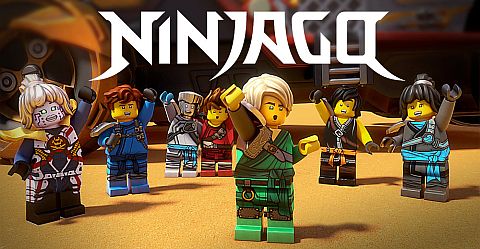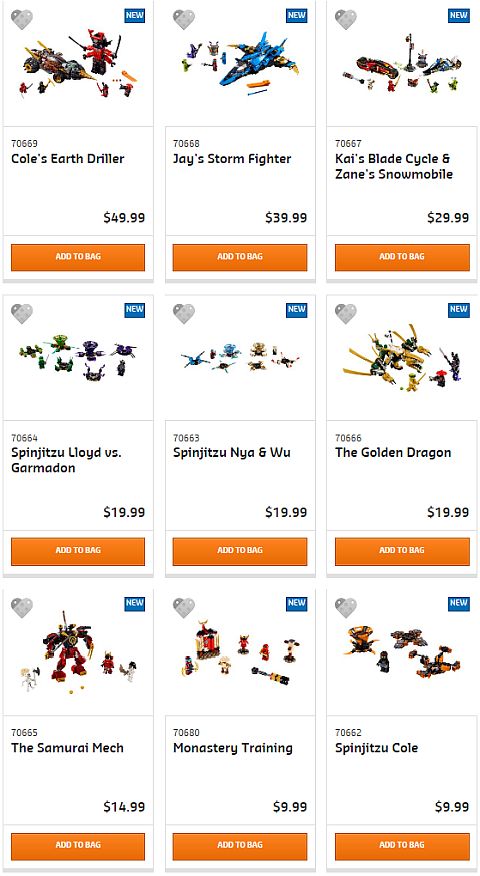The Spider-Man: Far from Home film is scheduled to be released at the beginning of July. The story takes place shortly after the events of Avengers: Endgame. Peter Parker, who is mourning the death of his mentor Tony Stark, goes on a school trip to Europe with his classmates. While abroad, he is recruited by Nick Fury to team up with Quentin Beck (also known as Mysterio), a master of trickery and illusion to battle the Elementals from another dimension. While we still have to wait over a month to see the movie, the LEGO sets related to the film are already available. Below, we will discuss all three sets in the collection.
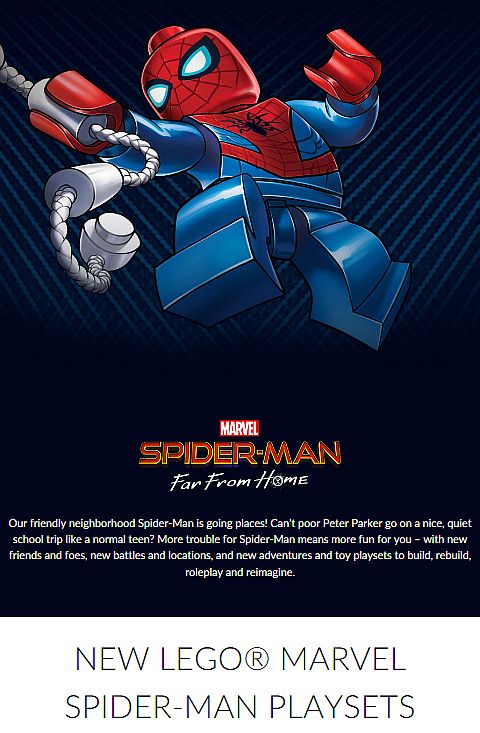
First, let’s start with the trailer of Spider-Man: Far from Home, as it gives us a glimpse of the characters, vehicles, and scenes included in the LEGO sets, then we will look at the sets individually.
➡ #76128 LEGO MOLTEN MAN BATTLE: Molten Man looks awesome in the trailer, and the LEGO version looks impressive as well, standing over 7” (18cm) tall with lots of trans-orange pieces. It also features posable head, arms, and legs, gripping claw, 6-stud rapid shooter, buildable melting objects including half a car, street lamp, and a traffic light attached to its body, molten lava elements, and attachment points for minifigures. The three minifigs are Spider-Man, Mysterio, and a firefighter desperately trying to put out the fire with a small fire extinguisher, which is funny. In the video-review below, JANGBRiCKS will show you the fire monster in more detail. 294 pieces. Price: $29.99 – BUY HERE

➡ #76129 LEGO HYDRO-MAN ATTACK: In this set, we get a little slice of Venice including a canal-side café with a buildable coffee machine, outside table and seats, as well as a bridge and a gondola. Everything looks seemingly romantic, but there is also a lot of exploding features hidden in the structures to play out Peter Parker and MJ defending the city against the menacing water creature. It’s interesting that LEGO designers chose to incorporate a real minifig into Hydro-Man instead of just making him brick-built like Molten Man. The other three minifigs are MJ, Peter Parker (with interchangeable Spider-Man head), and Mysterio. In the video-review below, you can see the set and minifigs in more detail. 471 pieces. Price: $39.99 – BUY HERE
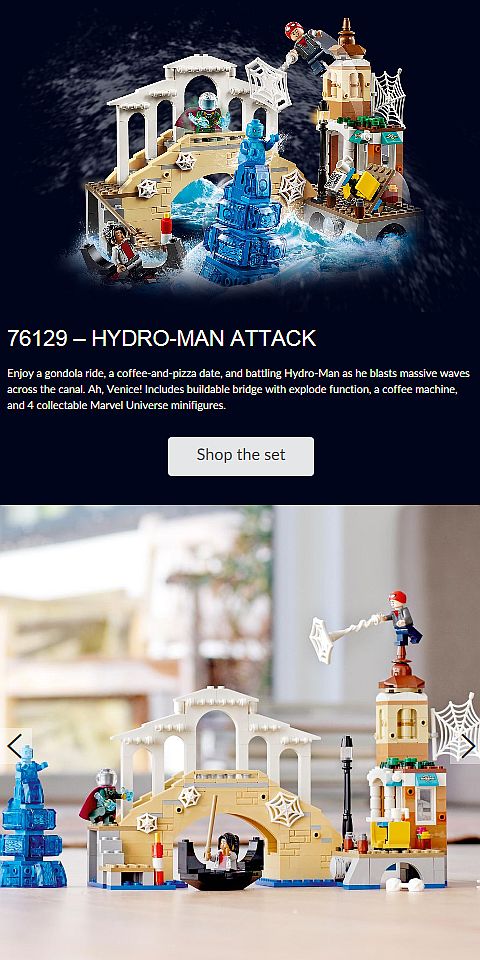
➡ #76130 LEGO STARK JET AND DRONE ATTACK: This is the largest set in the LEGO Spider-Man: Far from Home collection, featuring the Stark Jet airplane, a couple of drones, and four minifigs. The jet has a nice and sleek design with adjustable wings, 2 stud-shooters, lots of storage compartments for minifigs and energy bombs, and an opening hatch. The drones also have stud-shooting functions. The minifigs included are Happy Hogan, Nick Fury, Mysterio, and Spider-Man. The jet measures over 6” (10cm) high, 9” (38cm) long and 3” (25cm) wide. Good set with fun play-features, but the price is a little too high. 504 pieces, Price $69.99 – BUY HERE

Overall, the LEGO Spider-Man: Far from Home collection looks solid with three good sets that recreate some of the most important scenes in the movie. The minifigs also look excellent with accurate details and finely designed prints. In the player below, I have included video-reviews and speed-builds of all three sets by JANGBRiCKS so you can check them out in detail.
If you are interested to get any of the three LEGO Spider-Man: Far from Home sets, visit the LEGO Marvel Super Heroes section of the Online LEGO Shop.
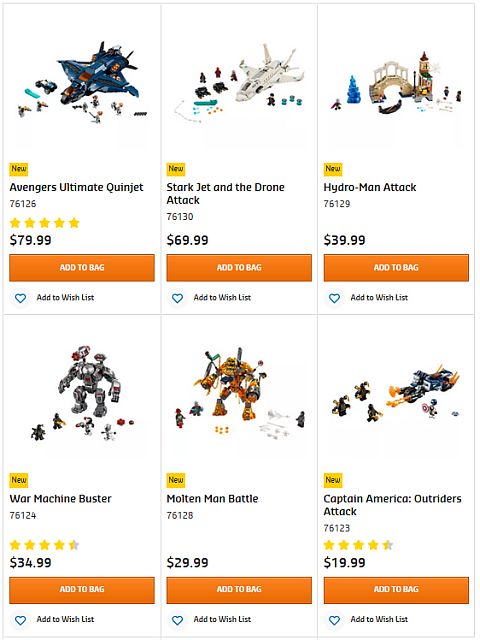
What do you think? Are you looking forward to the Spider-Man: Far from Home film? And what do you think of the related LEGO sets? Do you have any of them already? Feel free to share your thoughts and discuss in the comment section below!
And you might also like to check out the following related posts:


